#ancient jewellery
Text

Opium capsule necklace, grave VI, Tillya-tepe, dating from 1st century BC to 1st century AD
#bactrian#ancient#afghanistan#ancient jewellery#necklace#ancient costume#costume#mdpancient#mdpcostume#1st century#bactria
193 notes
·
View notes
Text
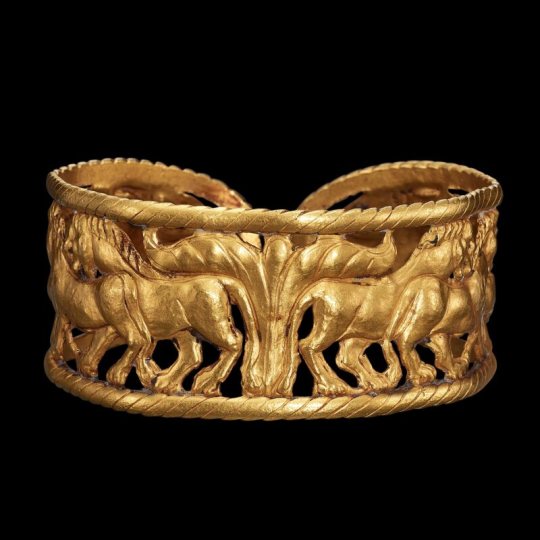


Gold bracelet, Northwest China, 1st century BC
from Sotheby's
594 notes
·
View notes
Text




Shropshire Marches Prehistoric Gold Sun Pendant, 1000 to 800BCE, 'Gathering Light: A Bronze Age Golden Sun' Touring Exhibition, The Collection, Lincoln.
"Found in the Shropshire Marches in May 2018, the gold pendant dates between 1000–800 BC and includes a rare depiction of the sun not previously seen on objects found in Britain.
Solar symbolism was a key element of mythology and belief in the Bronze Age, which lasted from around 2150–800 BC in Britain. This pendant celebrates the life-giving power of the sun during the time of the earliest metalworkers, revealing the importance of the sun in people's lives and its centrality to their beliefs in this period.
The pendant also marks the end of an era as one of the final expressions of an art style and belief system that lasted for almost 1,500 years. Deposited intentionally in a wetland landscape of bogs and ponds 3,000 years ago, it provides a starting point for discussions about the role of both water and the sun in ancient history."
#ice age#stone age#bronze age#copper age#iron age#neolithic#mesolithic#calcholithic#paleolithic#prehistoric#prehistory#sun pendant#Shropshire Marches#archaeology#prehistoric gold#gold pendant#ancient jewellery#prehistoric metalwork#prehistoric art#ancient design#relic#ritual#sun worship#artefact#symbols#gold#Lincoln
397 notes
·
View notes
Text
Amazing find.
94 notes
·
View notes
Photo
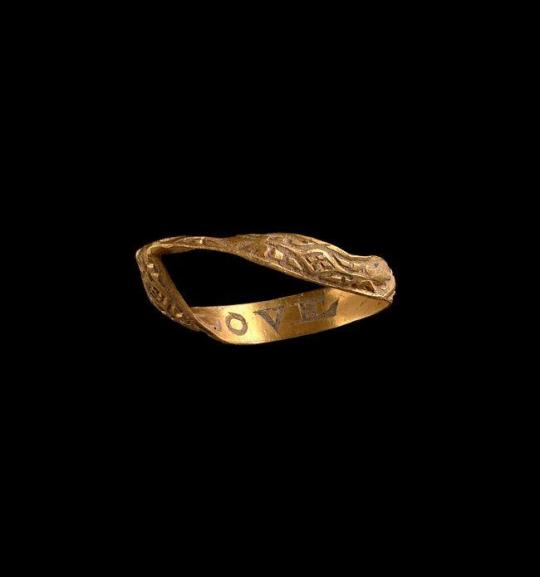
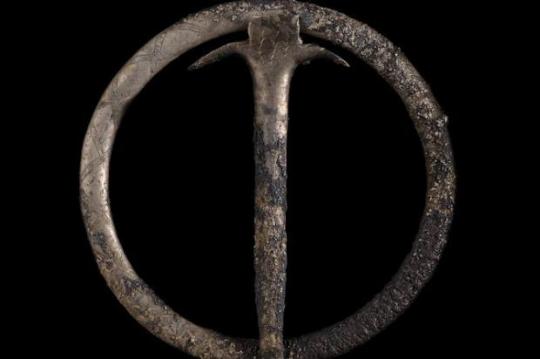

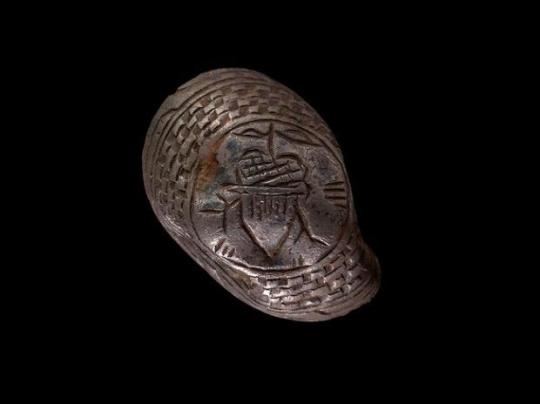

Gold and Silver Treasure Discovered in Wales
Treasure, including a medieval silver brooch and three gold and silver rings, has been found by metal detectorists in fields around Pembrokeshire.
Paul Bennett, acting senior coroner for Pembrokeshire, declared five treasure finds during inquests on Friday, June 17.
The finds include three finger rings, one brooch and a thimble of medieval and post-medieval dates.
Detectorist Lee Evans found a thirteenth, or early fourteenth, century silver annular brooch while metal-detecting on farm land near Cilgerran in May last year.
The frame of the brooch is decorated with herringbone and transverse groove patterns, inlaid with niello - a black enamel-like material providing a colour contrast with the background silver of the brooch.
Dr Mark Redknap, deputy head of archaeology collections and research at the National Museum of Wales said that finds of medieval jewellery such as the silver brooch are being increasingly reported around Wales.
“The prompt reporting of the Cilgerran brooch by the finder has added fresh evidence for personal identity expressed through this niello-decorated class of fashionable brooch circulating in medieval Wales,” he added.
“A form of cultural evidence reliant on archaeological artefacts and knowing where they are being discovered.”
Another item declare treasure on Friday was a medieval silver finger ring found by Vaughan Thomas while metal-detecting in a field near to St Davids in October 2018.
The ring has a broad flattened band and a bezel in the form of a stylised flower with an engraved design. It is likely to date from the thirteenth- to sixteenth centuries.
“The reporting of medieval jewellery such as this decorated silver finger ring through the Portable Antiquities Scheme and the Treasure Act 1996, contributes greatly to our understanding of different fashions and expressions of personal identity in Medieval Wales,” said Sian Iles, Curator Medieval and Later Archaeology at the national museum.
Scolton Manor Museum has expressed an interest in acquiring both the ring and the brooch following an independent valuation by the treasure valuation committee.
Three finds by metal detectorist Jake Webster were also declared as treasure. These included a post-medieval gold and enamel fede ring.
The ring is engraved with flowers, with remnants of blue enamel, with the words Love-God engraved on the inside. It is believed to date from the 17th century.
It was found in a field near Wiston in June 2020. Also found by Mr Webster in the same month near Wiston was a seventeenth-century decorated silver thimble fragment.
His third find was a fragment of a medieval silver ‘stirrup’ ring fragment with a bezel that would have held a precious stone. This was found on November 2020 near Llawhaden Community, Pembrokeshire and dates from the twelfth- to thirteenth- century.
The inquest heard that Narberth Museum is interested in acquiring these treasure finds for its collection.
By Becky Hotchin.
#Gold and Silver Treasure Discovered in Wales#treasure#gold#silver#jewellery#medieval jewellery#ancient jewellery#ancient artifacts#metal detector#archeology#archeolgst#history#history news#ancient history#ancient culture#ancient civilizations
153 notes
·
View notes
Photo



Three pieces of ancient gold jewellery.
Pair of earrings in the form of amphorae; 200-100 BCE. Gold and garnet.
Ring with snake forms; 300-200 BCE. Gold and garnet. From Alexandria.
Medallion with Aphrodite & Eros. 200-100 BCE. Gold. Egypt.
#jewellery#ancient jewellery#ancient greek#ancient egyptian#graeco-egyptian#original photography#ancientprettythings
28 notes
·
View notes
Text
Like some Victorian gentleman, I can't resist a flash of ankles 😆
Anklets

This is a piece of jewellery that I have always loved, whether they are solid rings often made of gold, silver and brass or the flexible chain versions that sometimes come with little bells so you can make a tinkling sound when you walk, I adore them all.
The first time I ever saw ghungroo, the dancing bells worn by classical Indian dancers, I became obsessed with them. They are used to accentuate the rhythmic aspects of the dance and enable the audience to hear the complex footwork.
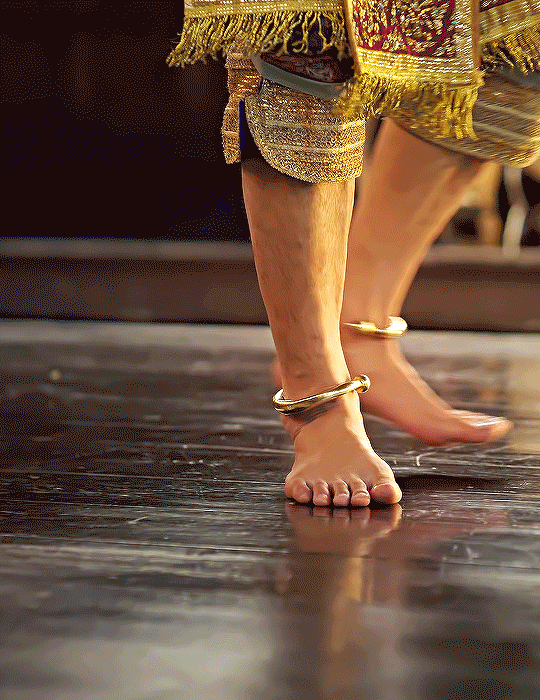
There is plenty of historical evidence for anklets being used as ornamentation as well as in dance for hundreds of years.
In Thai dance the anklets help to draw attention to the dancers footwork as well as serving as a historic reminder that in ancient times, men also wore anklets as a sign of status in some cultures.

2 notes
·
View notes
Text
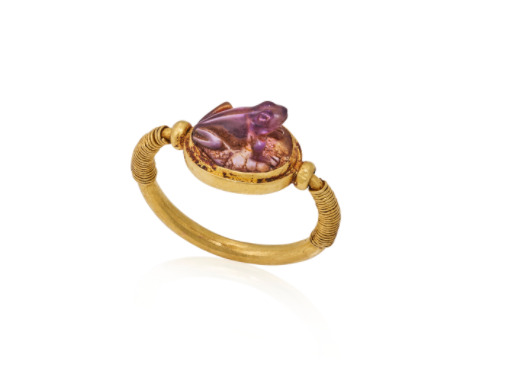
Gold swivel ring with amethyst frog, Egypt, New Kingdom, 1550-1229 BC
from Christies
10K notes
·
View notes
Text
All About Ancient Jewellery

Ancient jewellery has been found worldwide, dating back thousands of years to various civilizations such as the Egyptians, Greeks, and Romans. These early cultures used jewellery not only for adornment but also for religious and symbolic purposes
Egyptian jewellery was often made of gold and often featured religious symbols like the Eye of Horus and the Scarab beetle. They were known for their intricate designs and use of colored gems that were also used to add extra detail.
Greek jewellery was similarly intricate but often featured more naturalistic designs like leaves, flowers, and animals. They used materials such as gold, silver, and precious gems and were known for their filigree work and granulation techniques.
Roman jewellery was heavily influenced by Greek and Etruscan styles but also incorporated new techniques like enameling. They used gold, silver, and bronze and were known for using intaglio and cameo gems.
In all of these ancient civilizations, jewellery played a significant role in both everyday life and special events and was often passed down through families as an heirloom.
Overall, ancient jewellery offers a glimpse into the culture, values, and beliefs of civilizations long gone and continues to be a fascinating subject of study for historians and archaeologists today. Ancient jewellery comes in many different styles, reflecting the diverse cultures and civilizations of the past.
Celtic jewellery was known for its knotwork designs, symbolizing the eternal cycle of life. They used bronze, iron, and gold materials and often incorporated precious gems like amethysts and garnets.
The ancient cultures of Mesoamerica, such as the Aztecs and Mayans, produced intricate jewellery in gold or other precious metal such as silver, and turquoise. Their designs often incorporated religious symbols and were used to denote status and wealth.
Chinese: ancient Chinese jewellery was known for its delicate craftsmanship and intricate designs, often featuring precious gems and jade. The dragon was a common motif, and jewellery was used to convey rank and status.
Overall, ancient jewellery is a rich and fascinating subject, reflecting the diverse styles and cultural values of civilizations from the past.
1 note
·
View note
Text
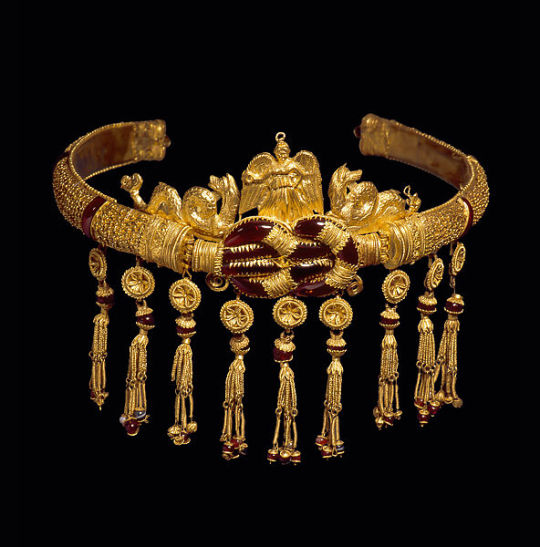
Greek Gold diadem with Hercules knot (250–150 BCE),
Gold, garnet, carnelian, sardonyx
3×9 1/8 in. (7.6 × 23.1 cm).
On loan to the Metropolitan Museum.
#greek art#ancient artifacts#ancient art#antiquities#antiquity#jewellery#archeology#met museum#art history#history#garnet#carnelian#sardonyx#heracles#hercules
2K notes
·
View notes
Text
instagram
These Roman vases are fiddly as heck but I love them so I guess I only have myself to blame when my hands cramp up
#polymer clay#polymer clay earrings#Roman vase#ancient jewellery#ancient history#Roman#etsystore#etsyshop#clay jewelry#Instagram
0 notes
Text
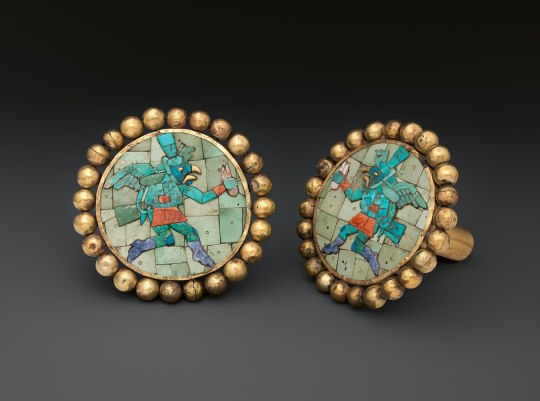
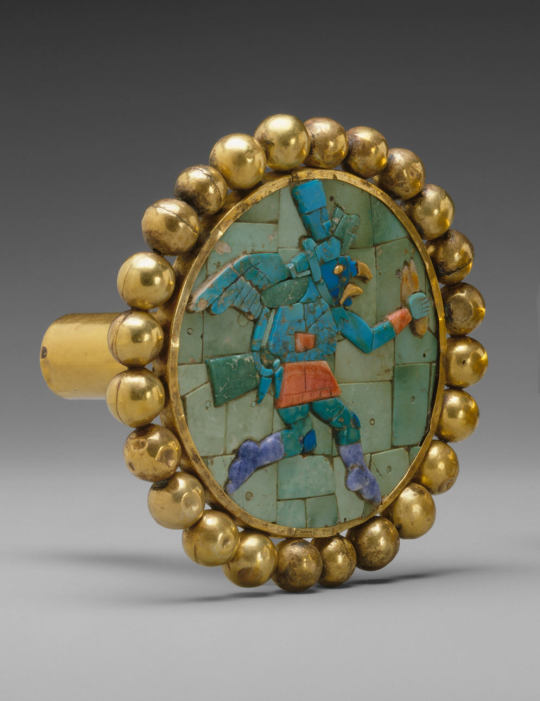
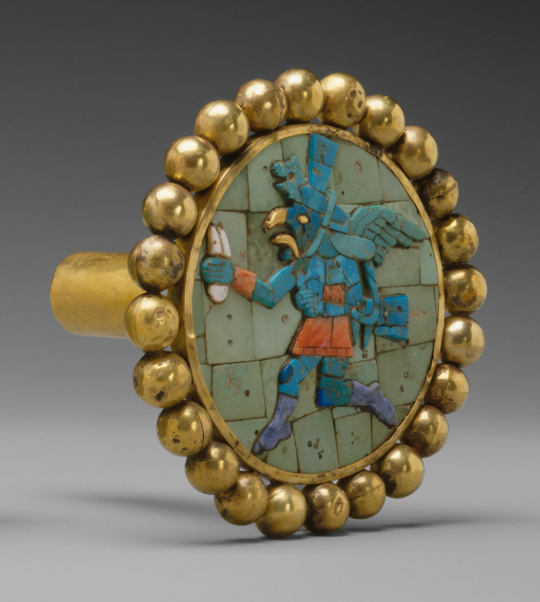
Winged runner on an ear ornament, Moche culture, modern day Peru, 3rd-7th century
#south america#the americas#mdpcostume#jewellery#earrings#peru#pre columbian#ancient jewellery#costume#moche
133 notes
·
View notes
Text

Gold shoe ornaments for the Hochsdorf Chieften's Grave in Baden-Wurttemberg, Germany, circa 530 BC
#history#ancient history#antiquities#jewelry#jewellery#ancient art#art#ancient jewellery#archaeology
644 notes
·
View notes
Text

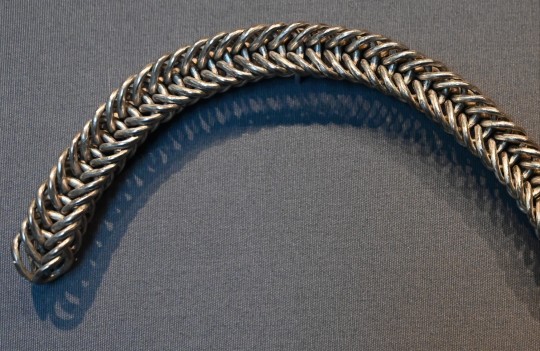
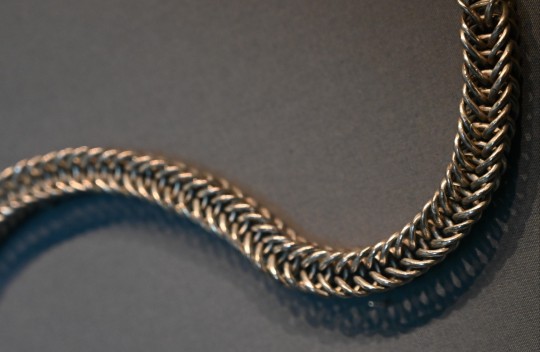
The Gaulcross Hoard Ancient Silver Chain, The National Museum of Scotland, Edinburgh
#silver hoard#ancient jewellery#jewellery#bracelet#silver#metalwork#Metalworking#artefact#wealth#archaeology#hoard#gaulcross hoard#edinburgh#ancient scotland#Scotland#treasure hoard#pict#pictish#picts
179 notes
·
View notes
Text
Fascinating.
12 notes
·
View notes
Text

Brooch, used to hold clothing together, 1100BC-1000BC Bronze Age Europe.
2K notes
·
View notes